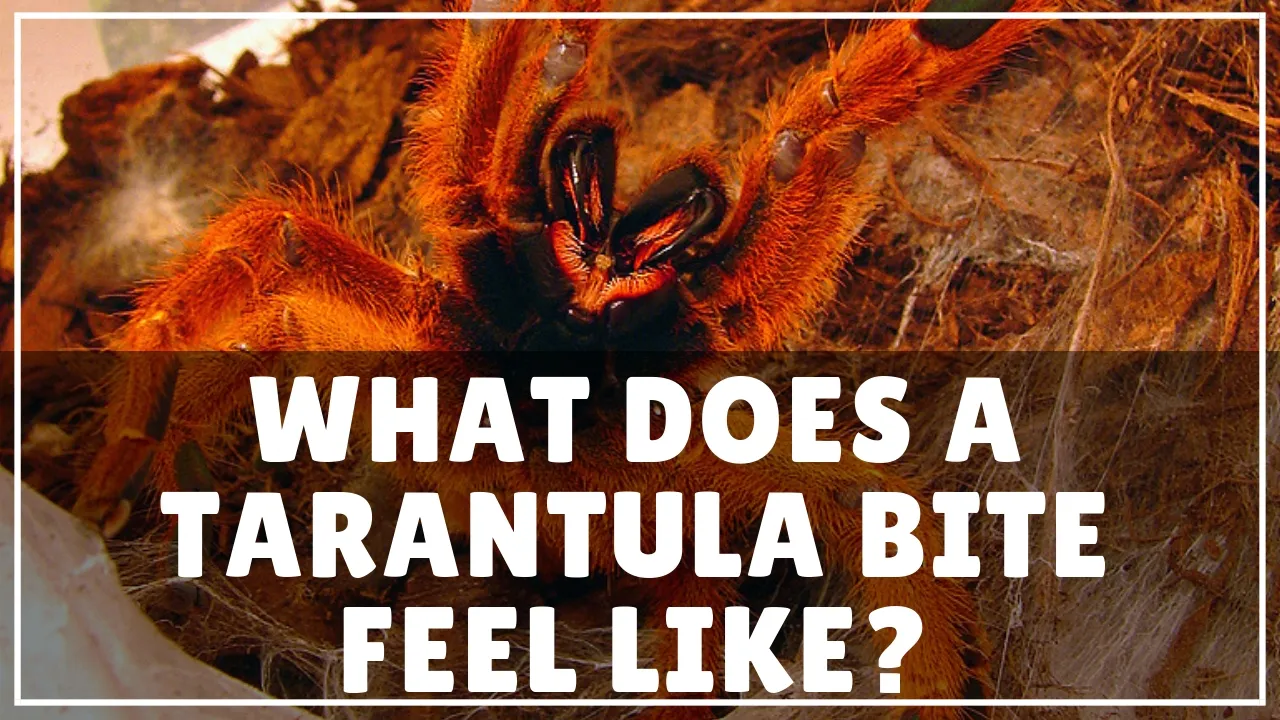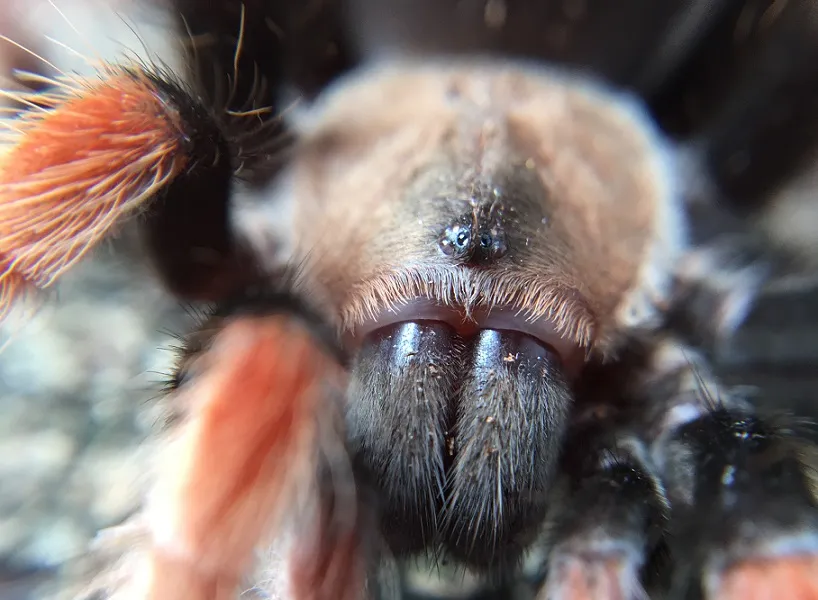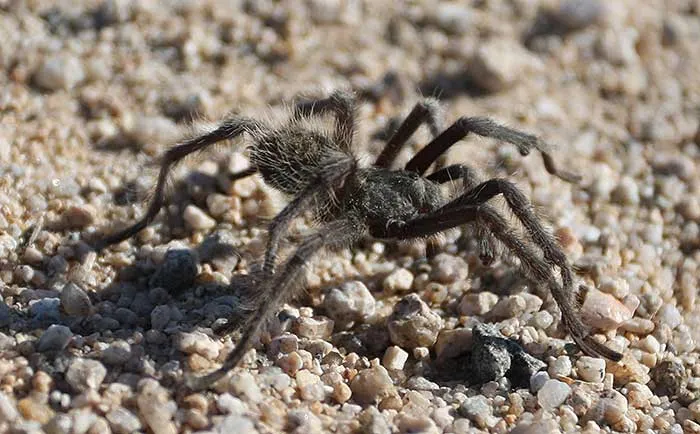What Is a Tarantula Dry Bite?
A tarantula dry bite occurs when a tarantula bites, but does not inject venom. This can be a surprising encounter for anyone, particularly those new to keeping these fascinating creatures. While a venomous bite is a cause for concern, a dry bite, though still not pleasant, is significantly less dangerous. Understanding the difference between a dry bite and a venomous one, as well as what causes them, is crucial for responsible tarantula ownership. The term “dry” refers to the absence of venom, which is a key distinction. This is an important topic for all who are curious about or already own a tarantula.
Understanding the Dry Bite Mechanism
Tarantulas possess fangs, called chelicerae, which they use to bite. These chelicerae are connected to venom glands, which store and secrete venom. However, tarantulas can choose to bite without injecting venom. The decision to deliver a dry bite is a deliberate one, often influenced by the spider’s stress levels, its perceived threat, and its need to conserve venom. The mechanism involves the tarantula using its fangs to pierce the skin, but without squeezing the venom glands to release the toxins. This bite is still painful due to the physical trauma from the fangs, but the absence of venom dramatically reduces the risk of severe symptoms. This is why this distinction is important.
Why Do Tarantulas Give Dry Bites?

Tarantulas aren’t naturally inclined to bite, but when they feel threatened or stressed, they may resort to biting as a last resort. A dry bite is a way for a tarantula to ward off a perceived threat while conserving its venom. Venom is a valuable resource for tarantulas, which they use primarily to subdue prey. Producing venom takes energy, so tarantulas are careful about how they use it. When a tarantula feels threatened, it will often display defensive behaviors such as raising its front legs, showing its fangs, or flicking urticating hairs. Only as a last resort, when these warnings fail, will a tarantula resort to biting. This behavior is a complex interaction of instinct and conservation.
Factors Influencing Dry Bites
Several factors can influence the likelihood of a tarantula delivering a dry bite. These include the tarantula’s environment, its level of stress, and its natural defensive behaviors. Being aware of these factors can help owners take steps to reduce the risk of being bitten. It is crucial to consider all these factors when dealing with tarantulas. This knowledge can make ownership a more positive and less stressful experience for both the owner and the tarantula. This proactive approach will help keep you and the tarantula safe.
Stress and Environment
A stressed tarantula is more likely to bite, whether it injects venom or not. Stress can be caused by a variety of factors, including an unsuitable enclosure, extreme temperatures, lack of proper hiding places, and frequent handling. A tarantula that feels secure in its environment is less likely to feel the need to defend itself. Providing an appropriate environment, with proper temperature and humidity levels, a secure hide, and minimal disturbances, can help reduce stress levels and the likelihood of a dry bite. Careful habitat management is very important.
Defensive Behavior

Tarantulas have several defensive behaviors, and biting is usually the last resort. Before biting, a tarantula may display warning signs, such as raising its front legs, presenting its fangs, or flicking urticating hairs. These behaviors are meant to deter a potential threat. Recognizing these warning signs is crucial for avoiding a bite. If a tarantula is displaying these behaviors, it’s best to back away and give it space. Handling a tarantula when it is showing defensive behaviors dramatically increases the chances of a dry or venomous bite. Paying attention to the tarantula’s body language is key.
Identifying a Tarantula Dry Bite
Recognizing a dry bite is important to provide appropriate care and to understand the severity of the situation. Although less dangerous than a venomous bite, a dry bite can still cause pain and discomfort. It’s crucial to know what to look for to differentiate between the two. There are both visual and behavioral indicators that can help you determine if you’ve been bitten by a tarantula. Being able to quickly assess the situation will allow you to act appropriately.
Symptoms of a Dry Bite
The symptoms of a dry bite are usually localized and less severe than those of a venomous bite. The most common symptoms include immediate pain at the bite site, which can range from a sharp sting to a dull ache. There may also be some redness, swelling, and minor bleeding from the fang punctures. Some people might experience a mild itching sensation. Systemic symptoms like nausea, muscle cramps, or difficulty breathing are rare with a dry bite. If you experience any unusual symptoms, it is important to seek medical attention to rule out a venomous bite or an allergic reaction. Pay careful attention to any changes in your body.
Visual Inspection

Visually, a dry bite will often present as two small puncture wounds, corresponding to the tarantula’s fangs. The area around the bite may be red and slightly swollen. There might be minor bleeding, which can be easily controlled with pressure. In the absence of venom, there won’t be any significant discoloration or blistering. Examining the bite site carefully can help determine if the bite is indeed a dry bite. If you notice any signs of infection, such as increased redness, pus, or fever, it’s essential to consult a doctor. Regular inspection will help.
Behavioral Indicators
While the physical symptoms are important, observing your body’s response is just as crucial. The absence of severe symptoms can indicate a dry bite. If you don’t experience any systemic reactions, such as nausea, dizziness, or difficulty breathing, it’s more likely to be a dry bite. However, monitor yourself for a few hours after the bite to ensure no delayed reactions occur. If in doubt, seek medical advice. Your overall well-being is the most significant indicator.
First Aid for Dry Bites
If you are bitten by a tarantula, whether you suspect it’s a dry bite or not, it’s essential to take immediate action. Proper first aid can help manage any discomfort and reduce the risk of complications. Knowing the right steps to take can make all the difference. This includes cleaning the bite site, monitoring for symptoms, and seeking medical attention if necessary. Quick and appropriate action is very important.
Immediate Actions

Immediately after being bitten, wash the affected area thoroughly with soap and water. This will help to clean the wound and reduce the risk of infection. Apply a cold compress to the bite site to reduce swelling and pain. You can use an ice pack or a cold, wet cloth. Elevating the bitten limb can also help minimize swelling. Keep the wound clean and dry, and avoid scratching the area, as this can increase the risk of infection. These steps can assist in managing your discomfort.
When to Seek Medical Attention
While a dry bite is generally not life-threatening, it’s still important to seek medical attention if you experience certain symptoms. If you develop severe pain, swelling, redness, or any signs of an allergic reaction, such as difficulty breathing, hives, or swelling of the face or throat, seek immediate medical help. Any unusual or worsening symptoms warrant a visit to the doctor. If you are unsure whether the bite was venomous, it is always best to err on the side of caution and seek medical advice. Your health is your top priority.
Preventing Dry Bites
Preventing dry bites is a crucial aspect of responsible tarantula ownership. Understanding how to handle tarantulas safely and creating a safe environment can greatly reduce the risk of being bitten. By taking the right precautions, you can minimize the chances of both dry and venomous bites. The goal is to minimize potential harm. These preventive measures ensure that interactions with tarantulas are as safe as possible.
Handling Safely

Handling a tarantula should be approached with caution. Avoid handling your tarantula unless necessary, such as during cage maintenance or health checks. When you need to handle your tarantula, do so with patience and gentleness. Always approach the tarantula calmly and slowly. Never make sudden movements, as these can startle the spider and cause it to bite. If the tarantula shows any signs of stress or aggression, such as raising its front legs or showing its fangs, it is best to leave it alone. Use tools, such as a soft brush, to gently guide it if necessary. Prioritizing the tarantula’s comfort will help keep you safe.
Creating a Safe Environment
Creating a safe and comfortable environment for your tarantula is essential. Ensure that the enclosure is of the appropriate size for the species and provides plenty of hiding places. Maintain the correct temperature and humidity levels for your tarantula’s specific needs. Avoid overcrowding the enclosure, and provide a substrate that allows the tarantula to burrow if it is a burrowing species. Minimize disturbances by placing the enclosure in a quiet area away from direct sunlight and excessive noise. By providing a safe and secure environment, you can reduce stress and the likelihood of your tarantula feeling the need to defend itself. Always prioritize their environment.
Conclusion
Understanding tarantula dry bites is crucial for responsible tarantula ownership. By knowing what causes them, how to identify them, and how to prevent them, you can ensure the safety and well-being of both yourself and your tarantula. Always prioritize the well-being of your pet and handle these creatures with the utmost respect. Taking precautions, being informed, and practicing safe handling techniques will help ensure you can enjoy the experience of owning a tarantula. Remember that knowledge and responsible behavior are the keys to a successful and safe relationship with these fascinating creatures.
